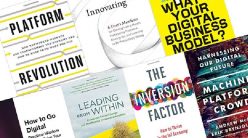Today, recommender systems are becoming very important. They have helped make our lives simpler and more enjoyable by recommending books, films, music, and what to purchase next. According to reports, 80% of Netflix’s viewership is influenced by algorithmically-developed recommendations. In what way do recommender systems operate? What are the various varieties of available recommender systems? The purpose of this article is to describe the numerous recommender systems along with their respective weaknesses and strengths.
An Overview of Recommender System & Its Different Kinds
Recommender systems are machine learning systems which utilize data to provide content or items to users depending on their preferences, previous behavior, or a combination of both. These systems can suggest various items, including films, novels, music, and products.
Collaborative filtering, demographic-based filtering, content-based filtering, knowledge-based filtering, hybrid approaches and utility-based filtering are different methods for developing recommender systems. The ultimate objective of recommender systems is to assist users in locating items they are likely to appreciate and boost user engagement with an application or platform.
There are two primary steps involved in making recommendations. They are:
- Candidate generation- It is developing a subset of items the user may be interested in.
- Candidate scoring- It reduces and organizes a list of candidates.
Large corporations such as Google, Spotify, Instagram, Amazon, Netflix and Reddit employ them frequently to increase user engagement with their platform. Amazon collects user data and uses recommendations to suggest products to a variety of users. For example, Spotify recommends songs comparable to those you’ve frequently played or enjoyed to encourage you to continue using their streaming service.
Different kinds of recommender systems
There are primary sub-categories into which the majority of recommendation engines fall, depending on the method used to select and suggest products or services that meet each customer’s specific requirements. They are:
- Content-based filtering
- Collaborative filtering
- Hybrid recommendation systems
Collaborative filtering
In this scenario, the focus is on the customers’ experiences using the online purchasing system and their perceptions of the products, as opposed to the characteristics of the items. Therefore, this category of recommendation systems utilizes machine learning techniques to collect user feedback and understand their preferences. This allows the system to recommend products purchased by users with similar preferences.
Content-based filtering
In recommender systems, content-based filtering recommends items to consumers depending on their past preferences or actions. It analyzes item metadata to discover items with comparable attributes to those with which the user has previously interacted. This approach investigates the features of the items in which users have expressed interest in order to recommend similar items, as opposed to collaborative filtering, which identifies similarities between users. Widespread applications of content-based filtering include e-commerce, news bulletins, and music and movie recommendations.
Hybrid systems
Hybrid recommendation systems integrate two or more specific recommendation strategies to capitalize on their complementary strengths.
Learn How to Establish a Recommender System
Multiple methods exist to integrate a recommender system into your application or website. But first, you must locate the appropriate individuals. Establishing a recommender system involves three distinct tasks performed by various individuals.
- Evaluating and designing a model for generating recommendations.
- Organizing system updates and feeding data into and out of the model for the user.
- Incorporating the recommender system into the organization’s “business system.”
To oversee the fundamental workflow of a recommender system, it is necessary to hire the following personnel.
- Data Engineers
- Data Scientists
- Web and Front-End Programmers
However, there is no need to develop a recommender system right from the beginning. Several ready-made software-as-a-service (SaaS) for e-commerce recommender systems exist. Depending on your requirements, you may also consider outsourcing. Outsourcing is advantageous because it allows for adaptability and can be less expensive. In addition, you can rest assured that you’ve hired competent individuals and need not fret about staff turnover.
Elaborating on How Should a Recommendation System be Written
To compose a recommendation system, adhere to the following general steps:
- Define the objective of the recommendation system and the data types you will be utilizing (e.g., movies, products, novels, etc.).
- Collect and prepare your data. This may involve cleansing your data, eliminating duplicates, and organizing it in a format your model can utilize.
- Select a recommended algorithm or strategy. This depends on the issue you are attempting to solve on the data type. Standard recommendation algorithms consist of content-based filtering, collaborative filtering, and hybrid methods.
- Develop and validate your model. Separate your data into testing and training sets, and train your model using the training set. Assess the accuracy of your model using the testing set.
- Evaluate your model and optimize it. Modify the model’s parameters and specifications to increase its precision. Consider including extra attributes or data sources to enhance your model.
- Launch your model. Once you are satisfied with the model’s design, include it in your platform or application.
Summary
Integrating recommendation systems with AI and ML has enabled businesses to thoroughly personalize customer experiences to strike a balance between the demand for customized shopping and the requirement for digital service providers and retailers to improve sales performance in a highly competitive market. Many ML architects and data scientists view AI and intensive learning as the next generation of recommendation systems.
Since the launch, these systems have undergone significant development and have vast application potential. The ability to create an intelligent system that can learn and propose products more precisely than a human being presents enormous opportunities for customer engagement and conversion. Getting in touch with a professional AI company will offer you limitless opportunities in this regard. Opporture , a leading AI-based training model company in North America, has shared the above insights on how AI recommender systems work and benefit us.






